Ever wondered what the biggest animals in the world are?
While there are some obvious answers, a few creatures are the largest of their kind, reaching a sheer size we never expected to see!
Whether you’re curious or are doing some school project, today’s post will show you what animals we are talking about.
Is your screen big enough? Because these are the biggest animals in the world!
Biggest Animals in the World
These are the largest organisms of each kind in the animal kingdom.
Largest Arthropod: Japanese Spider Crab
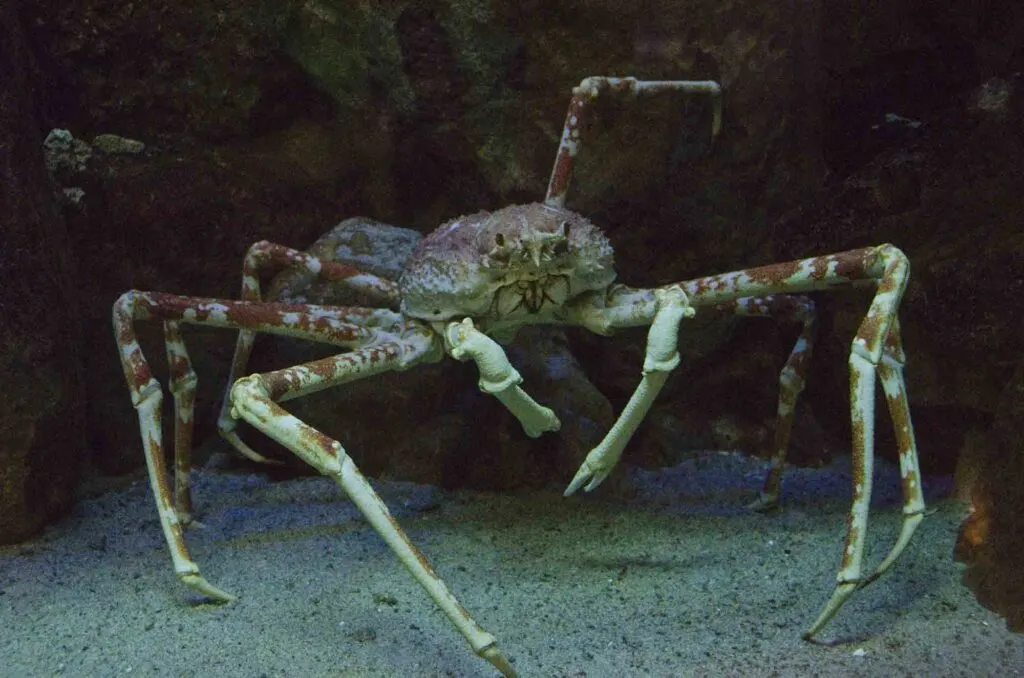
Native to parts of Japan, the Japanese spider crab (Macrocheira kaempferi) is the largest arthropod found on earth.
These marine crabs also hold the record for the largest leg span (close to 12.5 feet) among all marine arthropod species. They are known as Taka-Ashi-Gani in Japanese, translated as tall legs crab.
These omnivorous crabs are named so due to their resemblance to spiders, although they have ten legs. The males are generally bigger than the females, weighing around 44 pounds.
They can live up to 100 years in the wild – the longest lifespan among all crab species. However, as these crabs are considered a delicacy in some Asian countries, their populations are declining due to fishing.
Largest Insect: Titan Beetle
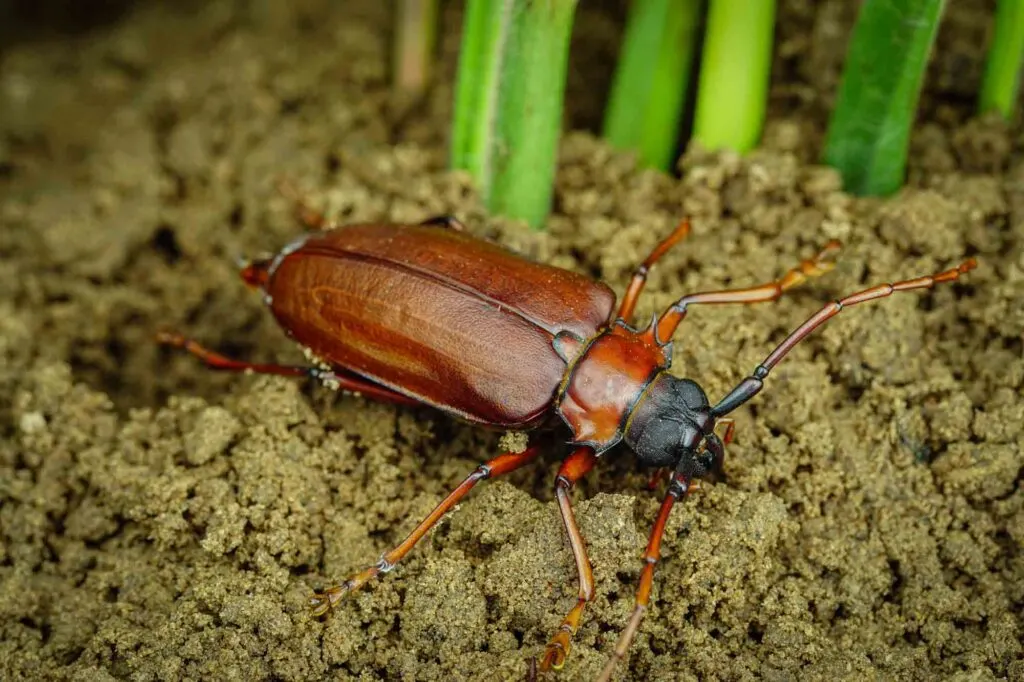
Native to parts of the South American rainforests, the titan beetle (Titanus giganteus) is the largest and heaviest insect found on earth.
However, these beetles have a short lifespan of only a few weeks, during which they do not feed. Instead, they survive on the reserves stored within their bodies during their pupa stage.
Reaching up to a length of 6.5 inches, they are among the biggest animals in the world belonging to the insect family.
These beetles are usually reddish-brown, with some areas being darker than the rest of the body. They have powerful mandibles capable of breaking a wooden pencil in half. They are nocturnal insects that prefer to lead a secluded life.
Largest Dolphin: Killer Whale
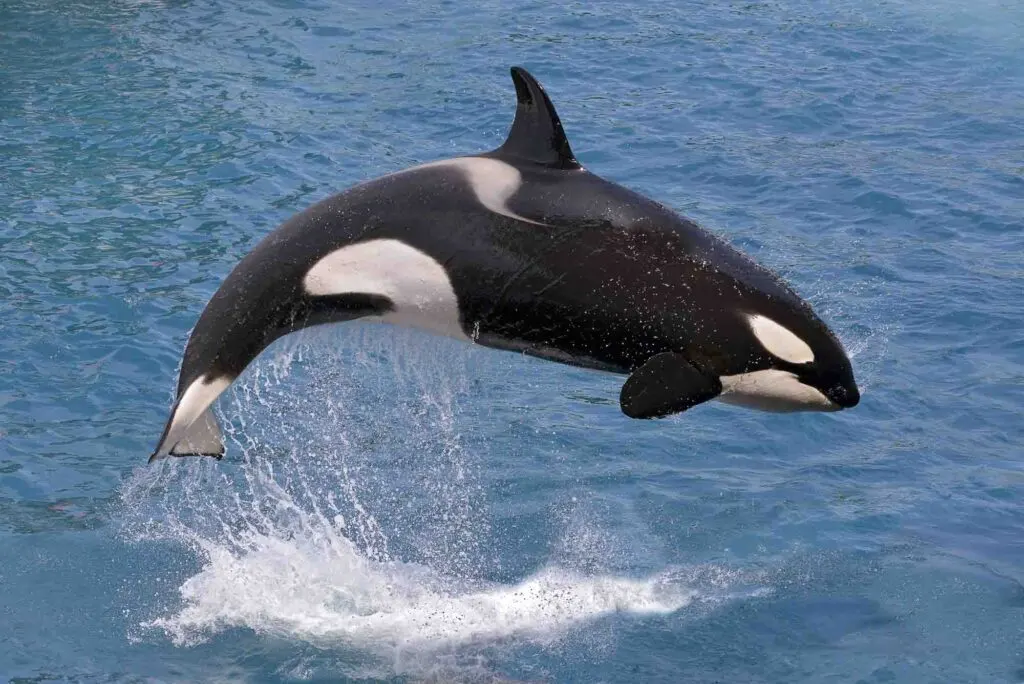
Orcas or killer whales (Orcinus orca) are large marine predators found in all oceans. But, unlike what their name suggests, they aren’t whales but are the largest species of dolphins in the world.
They were originally named ‘whale killer’ by sailors who observed them hunting larger whales in groups. The name was later turned around. These dolphins feed on fishes, seals, sharks, whales, and other marine species.
The largest recorded killer whale was around 32 feet in length and weighed close to 22000 pounds. However, their sizes may vary. These are social creatures with an average lifespan of 29 to 50 years in the wild.
Largest Cephalopod and Mollusc: Giant Squid
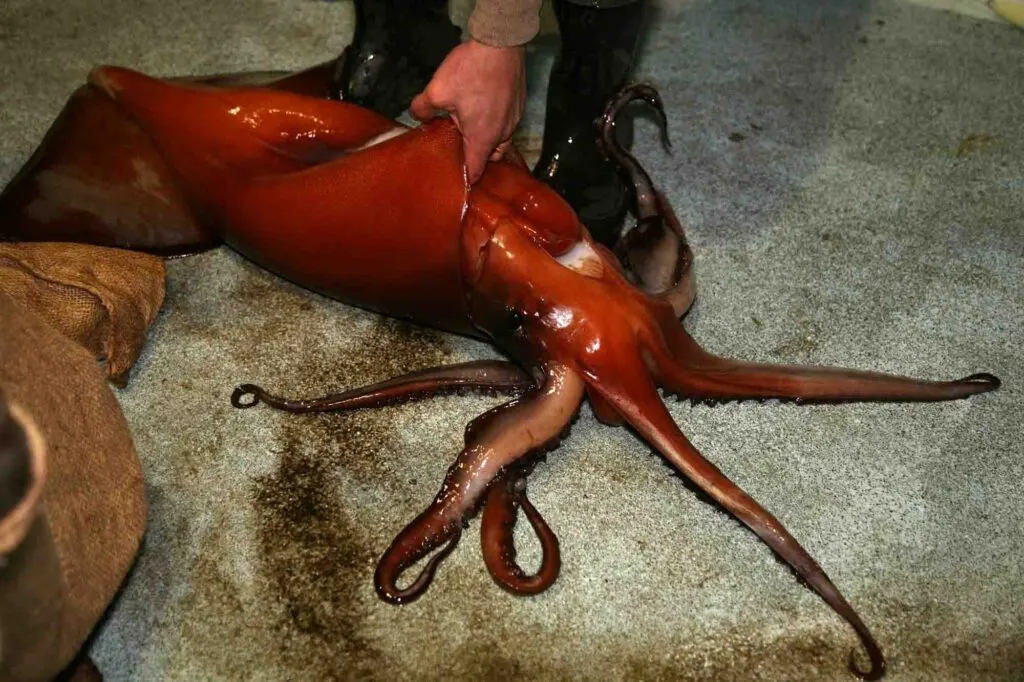
Giant squids (Architeuthis dux) are the largest squids belonging to the cephalopod family.
One of the biggest animals in the world, these marine creatures can be as long as 59 feet, including the tentacles. However, the longest specimen examined was around 42 feet in length. Their average weight is over 1,000 pounds.
Although they can be found in oceans worldwide, they are more common around the North Pacific and North Atlantic oceans.
They mainly feed on smaller squids and fishes and use dark ink to defend themselves against predators. These marine animals hold the record for having the largest eyes among all other species in the world.
The colossal squid is just a bit smaller than this species.
For the fun: The largest animal to ever live on land was the plant-eating, long-necked sauropoda—the largest dinosaur ever found! It is estimated to have been 121–131 feet long and 66 feet tall, weighing 76–85 US tons.
Largest Amphibian: Chinese Giant Salamander
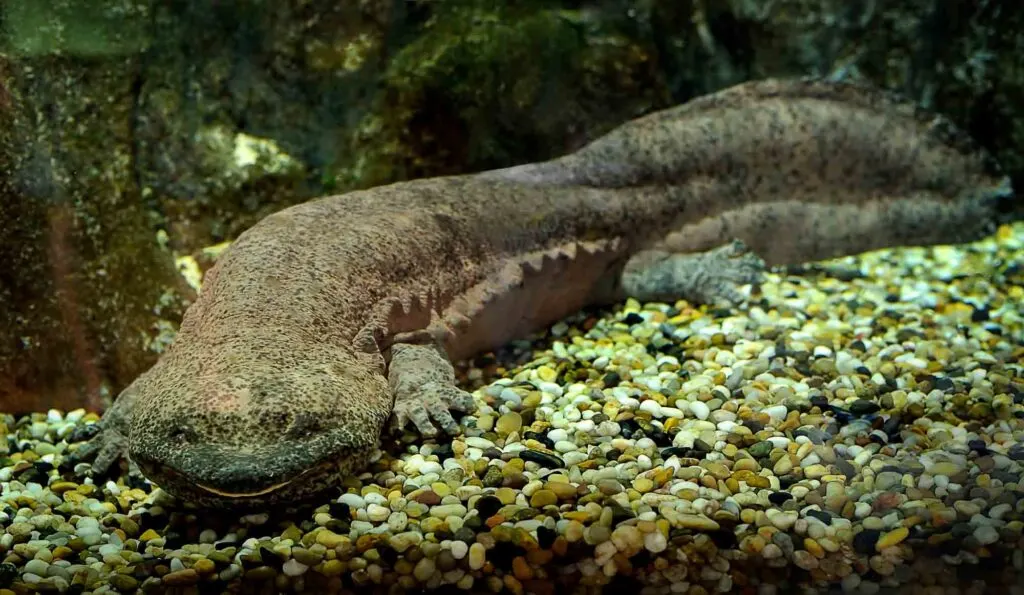
The Chinese giant salamander (Andrias davidianus) is native to China, where it resides in big streams and mountain rivers.
As the largest amphibian species in the world, these salamanders can grow up to a length of 5.9 feet. Their tails comprise more than half of their total body length.
They are nocturnal animals. Their diet consists of insects, fish, worms, crabs, and smaller amphibians. Due to their poor eyesight, they rely on the vibrations in the water to capture their prey.
Once widespread in China, these ugly animals are on the brink of extinction due to hunting and habitat loss. The population decline is because they are considered a delicacy in the country.
Largest Rodent: Capybara
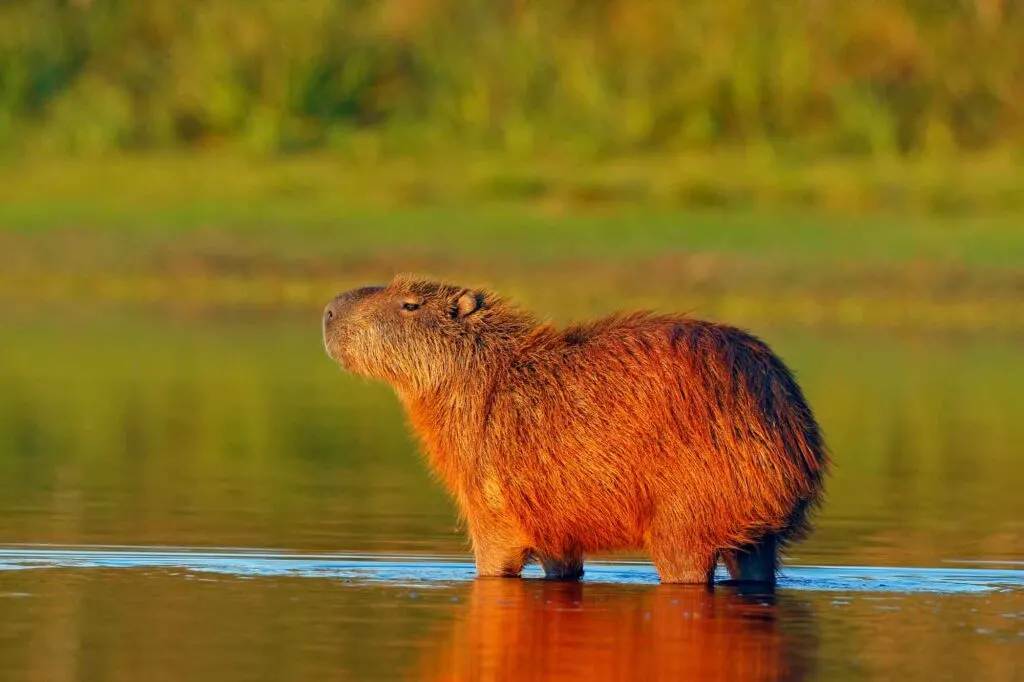
Similar in appearance to an enlarged version of a guinea pig, capybaras (Hydrochoerus hydrochaeris) are the largest rodent species found on the earth.
These large animals can reach up to around 51 inches in length and usually stand at about 20 inches in height. The size varies according to gender, with female rodents being comparatively bigger than the males. They can weigh up to 174 pounds.
Found in Central and South America, capybaras usually prefer to reside in moist environments like rivers, streams, marshes, and estuaries.
These social animals are typically found in groups of 10 to 40 individuals, or sometimes more. They are herbivorous animals who prefer to feed on grasses and plants growing in or near the water bodies.
Largest Fish: Whale Shark
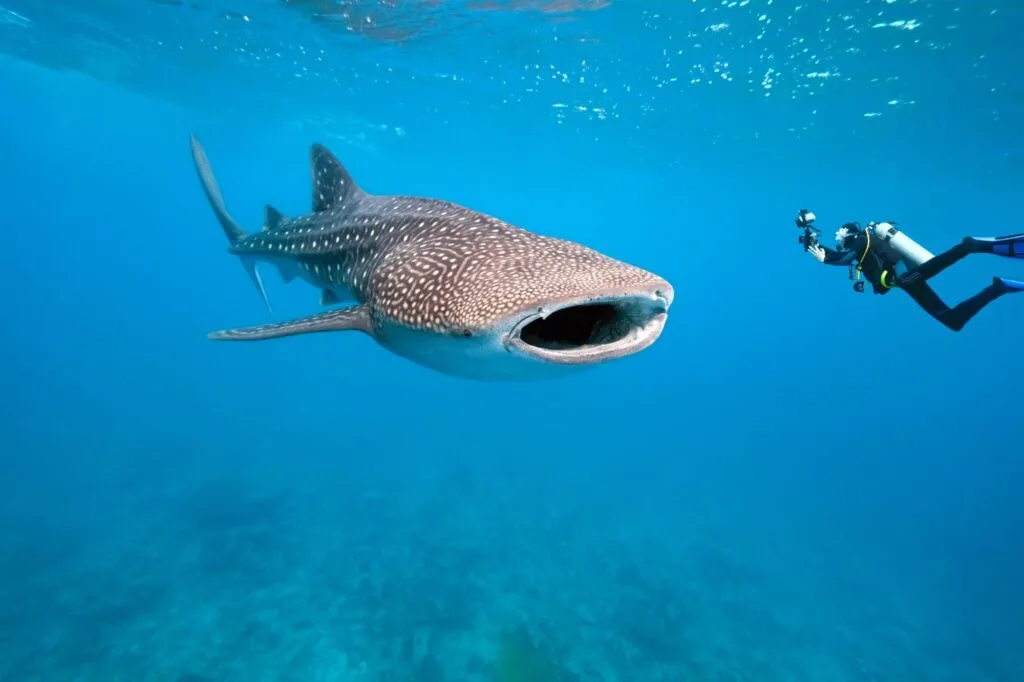
The whale shark (Rhincodon typus) is a beautiful marine animal with a gray body with white spots and markings.
Reaching up to a length of around 46 feet, these gentle giants are the largest species of fish on the planet, after the blue whale, of course. They are similar in size to some whale species, thus earning their name.
These fishes can be found in the warmer currents of the Indian, Pacific, and Atlantic oceans. As filter feeders, their diet consists mainly of smaller fish, crustaceans, and plankton found abundantly in oceans.
Along with being one of the biggest animals in the world, whale sharks also have a long lifespan– they can live up to 150 years in the wild. However, they are declining due to illegal fishing for their fins, meat, and oil.
Largest Carnivore: Polar Bear
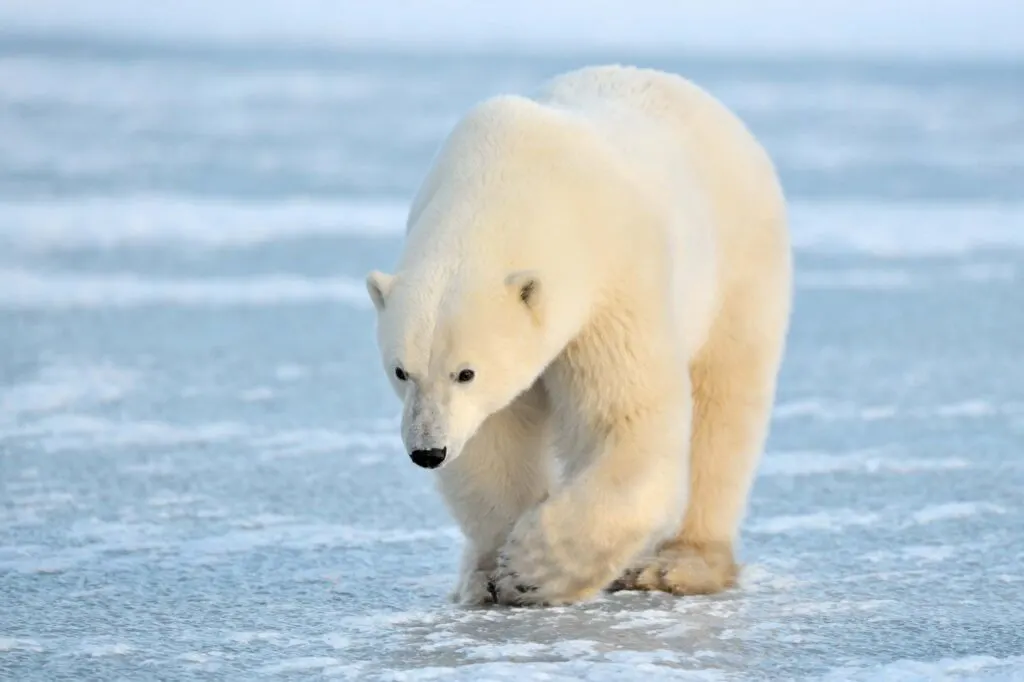
One of the largest animals in the world, polar bears (Ursus maritimus) are native to the Arctic circle.
These giant animals can stand at around 9.8 feet in height and reach 1300 pounds in weight, making them the largest carnivores roaming on the earth.
Polar bears are born toothless and blind, with a layer of short white fur covering their bodies. These are marine mammals, who spend a considerable part of their time hunting for seals, their favorite prey, in the chilly Arctic waters.
They can live up to 15 to 18 years in the wild. Unfortunately, these large carnivores are currently an endangered species, with climate change contributing to the loss of their habitat.
Largest Snake: Green Anaconda
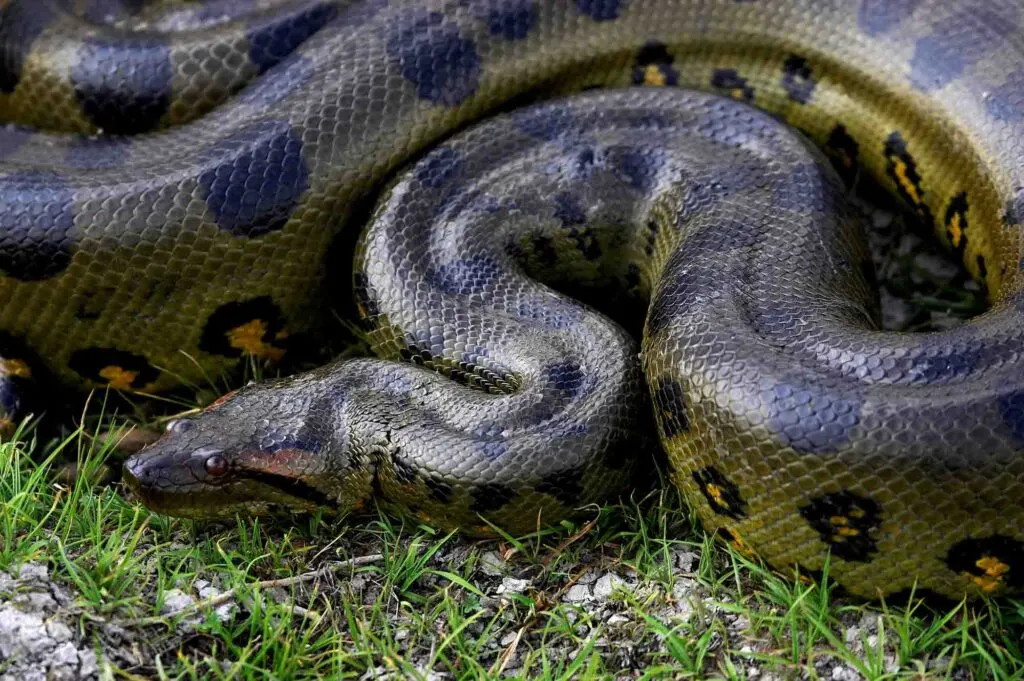
Native to parts of South America, the green anaconda (Eunectes murinus) is the heaviest snake found on the earth.
These snakes prefer to inhabit sluggish streams and swamps, where they prey on various mammals, fish, amphibians, and aquatic animals.
The average length of these non-venomous snakes is around 20 feet, and they may reach a weight of about 330 pounds. They are usually dark green with large black spots on their backs and smaller yellowish spots on the sides.
Their nostrils are positioned at the top of their heads, which allows them to breathe even when submerged underwater.
These snakes can survive for ten years on average in the wild, although longer lifespans are not uncommon.
Largest Lizard: Komodo Dragon
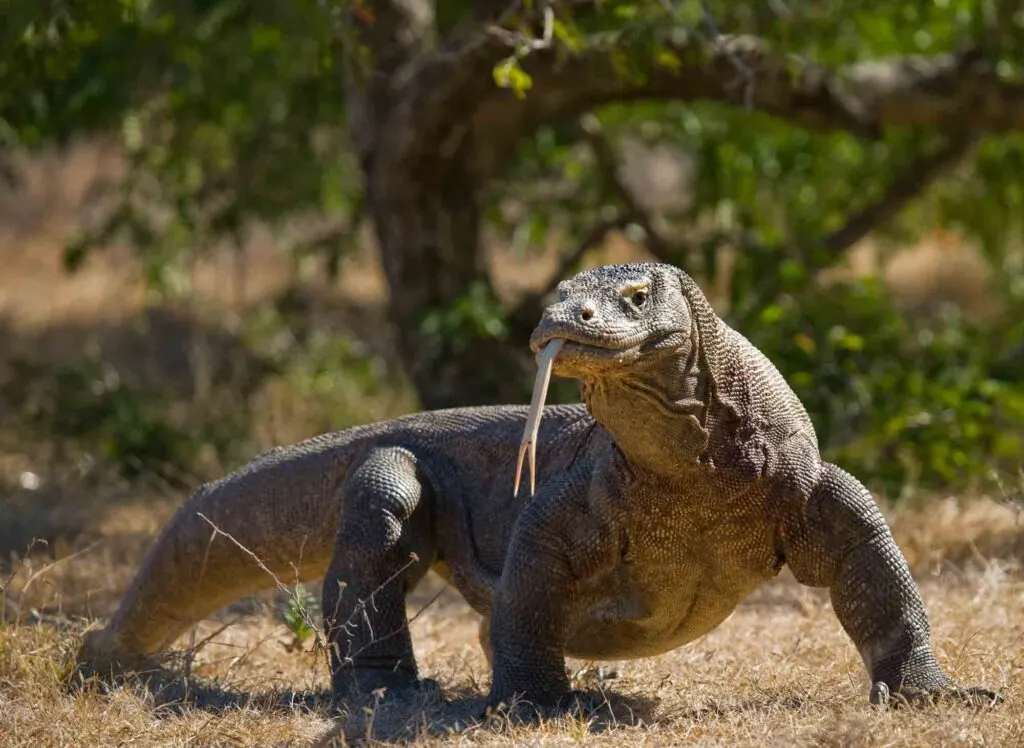
The largest among the living lizard species in the world, Komodo dragons (Varanus komodoensis) are found in only five rugged, volcanic islands of Indonesia. These massive lizards can grow up to a length of 10 feet and weigh around 300 pounds.
Except for the breeding season, these animals prefer to lead a solitary lifestyle. Their diet consists of a large variety of smaller animals and reptiles. They can even kill humans.
They hunt by ambushing their prey and delivering a venomous bite. Even if the game escapes, the animal is sure to die within a day due to blood poisoning.
Being born with a superior sense of smell, the komodo dragon can easily track the prey and finish the hunt.
Largest Living Bird and Largest Flightless Bird: Ostrich
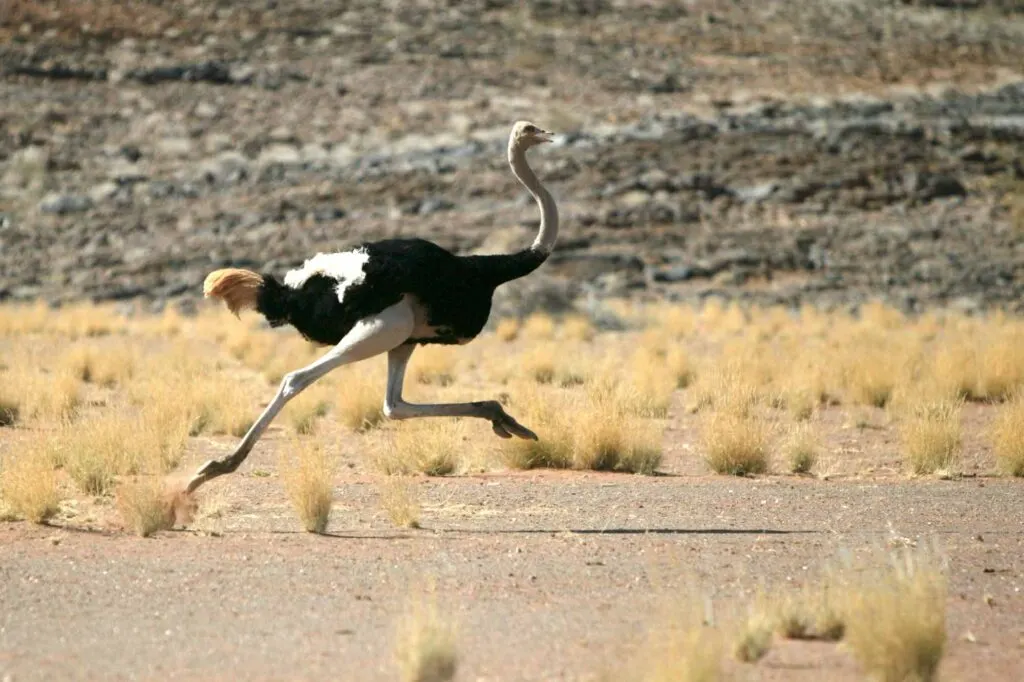
The ostrich is the largest bird in the world. These giant flightless birds can reach around 9 feet tall and weigh close to 330 pounds. They are found in the wild and only in Africa, where they reside in arid and semi-arid regions.
Along with being one of the biggest animals in the world, they also lay the largest eggs – each reaching a length of around 6 inches. One of the most interesting facts about this herbivorous bird is that they have three stomachs.
Their legs are their most powerful weapons – they can easily slay humans or any other animal with a single kick. Moreover, these largest living birds are very swift. They can run at a speed of 45 miles per hour.
Read next: Largest Flying Birds in the World
Largest Reptile: Saltwater Crocodile
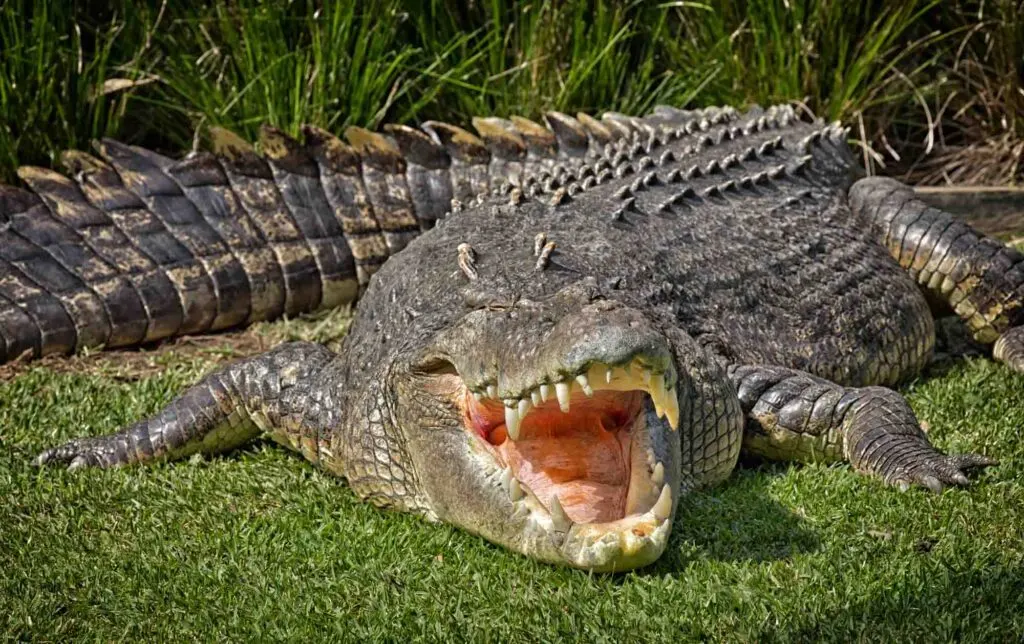
The saltwater crocodile (Crocodylus porosus) is a deadly predator native to South Asia and Australia.
They are the largest reptiles in the world, with adult males growing as long as 23 feet in length and can weigh more than 2000 pounds.
These dangerous animals are opportunistic feeders who wait just below the water surface. They can feed on various animals, including small and large mammals, birds, fishes, and even humans.
Saltwater crocodiles were hunted extensively in the past, which almost drove them to the point of extinction. But, with the implementation of a proper conservation system, these giant reptiles have been able to attain a low-risk status at present.
Largest Land Animal: African Bush Elephant
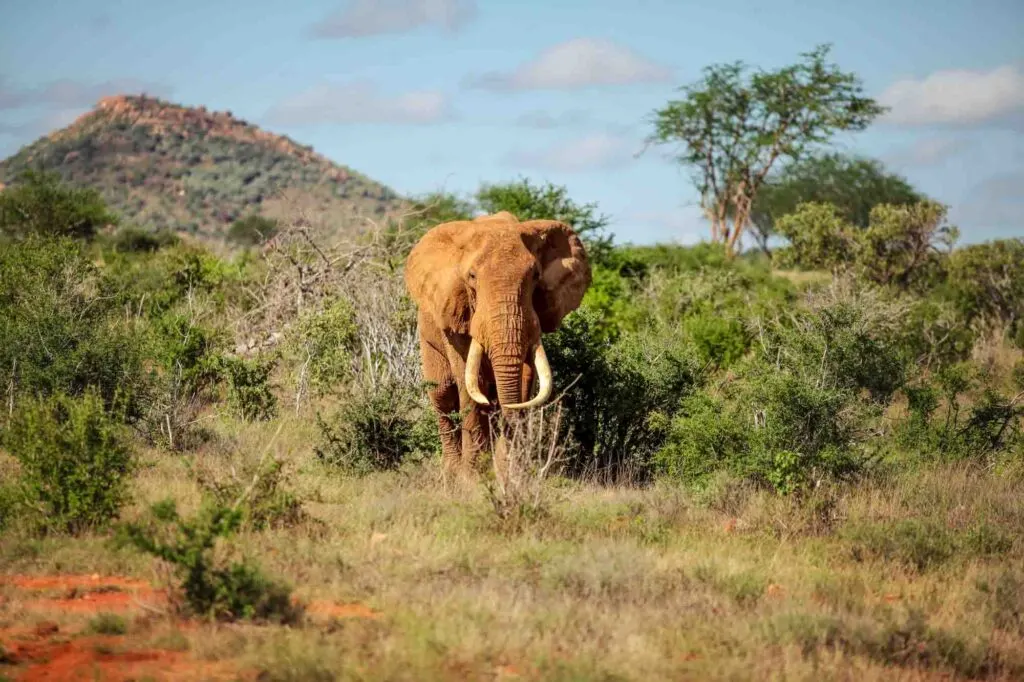
The African bush elephant (Loxodonta africana) is the largest land mammal in the world.
They can grow up to a length of 24 feet tall while reaching a height of 13 feet, making them one of the biggest animals in the world.
They are found all over the African continent, where they inhabit different habitats. Both the males and female animals of this elephant species have tusks.
Adult male African elephants are usually larger than females and can weigh up to 11 tons. To maintain their colossal size, they need to consume close to 350 pounds of food every day.
These largest land animals are herbivorous animals, with fruits, leaves, grass, bark, and other types of vegetation making up a large part of their diet. These animals have an average lifespan of 70 years in the wild.
Largest Mammal and Animal: Blue Whale
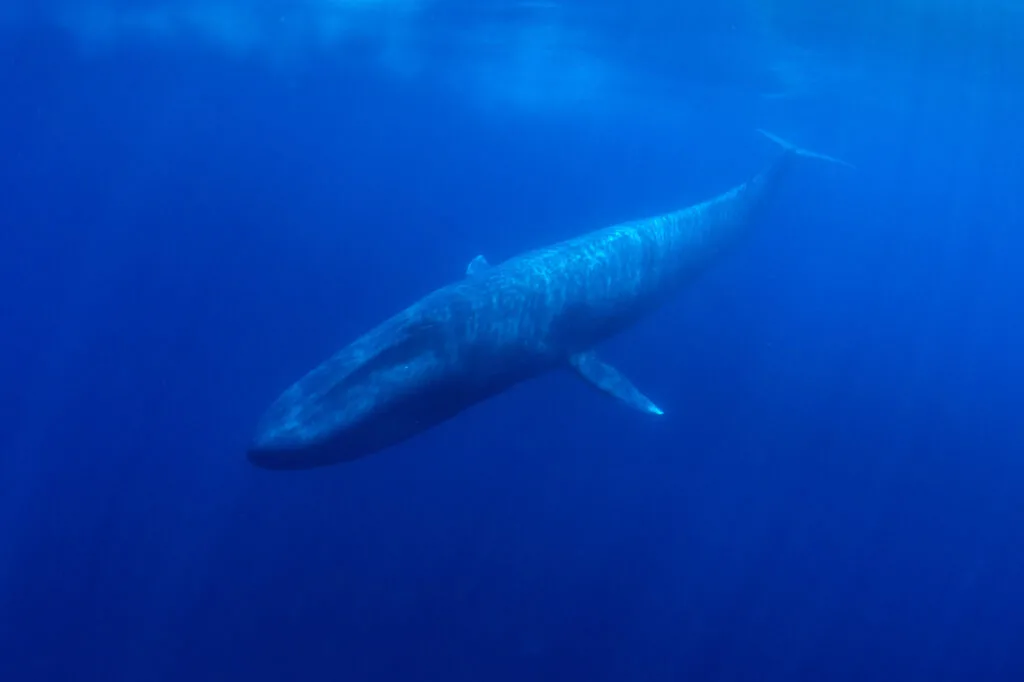
The blue whale (Balaenoptera musculus) is the largest mammal existing in the world.
These huge marine animals can grow up to around 100 feet and mainly live on a diet of small shrimp-like crustaceans called krill. These giant mammals can consume about 4 tons of krill daily.
Adult blue whales are bluish-gray and can weigh a whopping 200 tons, making them the heaviest animals ever known to exist. They are found in every ocean around the world, except the Arctic.
Despite their heavy bodies, they are good swimmers and can reach a maximum speed of 20 miles per hour when needed. But, they usually prefer to move at a slow pace of 5 miles per hour.
They have a long lifespan, with the average being around 80 to 90 years. However, the blue whale population is currently decreasing mainly due to widespread whale hunting.
Did you know? Blue whales are the loudest animals on the planet. Their call of 188 decibels is louder than a jet engine.
Did you enjoy reading about the biggest animals in the world? Then share this blog post with your friends!
